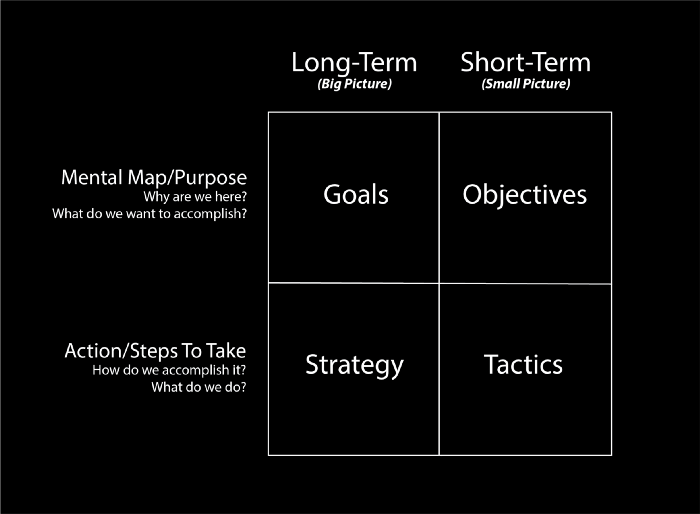As I have grown as a digital marketer, I’ve realized that everything we do can be summarized into a few essential components that aid us in communicating what needs to get done and how to do it.
I would spend hours on calls, meetings, emails, and Slack messages to share projects with contractors.
We thought Asana would ease the burden, but it only got more complicated. Sure, my co-workers fully understood me. We had a cadence and rapport that made our communication seamless. But what about communicating with people outside your circle who didn’t understand the terminology or those who need to pitch in at the last minute? Adding them into Asana and saying, “here you go,” wasn’t an effective strategy.
Communicating upward was another landmine. Top-level executives usually understood overall goals and objectives. They also had some semblance of understanding of our work. The problem usually lies in communicating how ground-level efforts directly relate to top-level goals.
Another issue is that on weekly calls, contractors will spend almost the entire meeting attempting to sell us on an idea or describing what they do when we only needed to know a few basics, how the project is progressing and there is anything we need to be concerned about or looking forward to, and how will this cost us?
In other words, we felt like we constantly had different conversations within the same conversation.
The Timiza Square
Timiza Square is a framework that effectively communicates projects upstream and downstream, stays on task, and ensures everyone is on the same page no matter their exposure to the project.
These squares combine the typical components of getting things done: tactics, strategies, objectives, and goals.
These components are nothing new. You can find blogs everywhere online about goals, objectives, etc. The information you can’t find online is how these various components work together to give you a bird’s eye view of your project and communicate that project efficiently and effectively.
The critical thing to remember is that these components work together to separate the short-term from the long-term and the theory from action. Often, the most confusing part of meetings is understanding the difference between a thought exercise, commendation, and what needs to be done.
More importantly, there’s a destination between the beautiful ideas that have birthed your project and the actual actions needed to make that project successful. Too often, I’ve joined conference calls thinking I’m going to learn a great deal, but I’ve been subjected to more strategy and less tactical information or vice versa.
Have you ever needed to give a 30-second summary of what your team is working on? Communicating your project within the framework of Timiza Squares allows you to convey information quickly and easily.
I’ll review each component first to ensure we are on the same page.

Goals vs. Objectives
Your goal is your overall purpose.
With that being said, always start with and agree on a goal.
An excellent example of a goal is: “Make The Solar Republic an online leader in space education.”
Goals are the long-term outcomes you want to achieve and are fluid and directional. Goals can be broken into “chunks” or objectives. Goals are usually open-ended and unstructured. Top-level executives love to discuss goals…and frequently confuse them with objectives and strategies.
A goal is not a strategy. Your goal rarely changes, but strategies and objectives change all the time.
Objectives are clearly defined achievable outcomes.
It is a measurable step you take to achieve a goal. An example of an objective is: “Increase website visits by 25% by the next quarter.” They leave little room for ambiguity as they are usually attached to KPIs and other metrics. The best trait of objectives is that they are measurable. There is no ambiguity as to whether they have been achieved or not.
NON-WORK EXAMPLE:
- Goal: Have a clean home.
- Objective: Wash the dishes.
Strategy vs. Tactics
Tactics and strategies are goals and objectives in action.
Your strategy is your approach to your objectives and how you plan to achieve them.
An excellent example of a strategy is: “Persuade website visitors that the best place to learn about space exploration and science is online.” The ideas you and your team generate to achieve your goals and objectives are usually defined as your strategy or strategic development.
It’s also crucial to remember that strategies can be described as your approach to doing things, while tactics are the things you do.
Tactics are the things you do.
This is the actual “work” and implementation of your strategy. They are the actions you take to achieve your objectives. Here are a couple of examples of tactics:
“Write content on the home page of the Solar Republic website.”
“Shoot video showing students learning about space online.”
Tactics are tasks, and they usually consist of the day-to-day steps, best practices, and management of your marketing plan as you move to achieve your goals. Tactics have discrete, finite timelines in which specific activities will be completed and measured.
NON-WORK EXAMPLE:
- Goal: Have a clean home for the dinner party tonight.
- Objective: Wash the dishes.
- Strategy: Ensure dishes are thoroughly cleaned and sanitized in enough time to start preparing the meal for tonight.
- Tactics (Tasks):
- Pre-wash dishes.
- Load the dishwasher.
- Turn the Dishwasher on.
- Use the Quick Clean setting.
- Use the sanitize setting.
- Remove dishes from the dishwasher.
- Put dishes away.
Using the Timiza System
It’s important to remember that these components are relative and work best together. A goal without an objective means nothing in how it’s communicated. The Working Squares allows you to add immediate context to the conversation. You’ll be able to quickly convey what needs to get done, how it needs to get done, why it needs to get done, and how it contributes to the big picture.
The frontline employee or contractor usually involves your objectives and tactics, while Executives would like to know your goal and strategy. You will put executives to sleep discussing objectives and tactics. Likewise, you’ll hear yarns discussing Goals with frontline employees. Everyone should be aware of all aspects of the Working Squares, but people are more engaged when talking about their quadrants.
You will notice in the graphic that there are two columns, a big picture, and a small picture column, and there are two rows for short, purpose, and action. Short-term actions exemplify tactics, while long-term purposes represent Goals.
As far as creating these components, the process of how this works starts with defining your goals. Next, you want to consider the objectives as stepping stones to your goals. Then you’ll have to devise a strategy to achieve each objective. Finally, you will need to outline what tactics or actions you’ll need to take in implementing your plan and achieving your objectives and goals.
A system is formed over time when your goals, objectives, strategy, and tactics work consistently. The easiest way to think about systems is to see them as habits. In other words, most people who work with capable and efficient systems rarely know they are using a system.
We rarely discuss systems because they are hard to separate from their parts, including automation, habits, rituals, and routines. With an excellent digital marketing system, you can seamlessly integrate your marketing efforts and get your team on the same page.
As a recap:
- Goal: “Make The Solar Republic an online leader in space education.”
- Objective: “Increase website visits by 25% by the next quarter.”
- Strategy: “Persuade website visitors that the best place to learn about space exploration and science is online.”
- Tactic: “Write content on the home page of the Solar Republic website.”
- Tactic: “Shoot video showing students learning about space online.”



